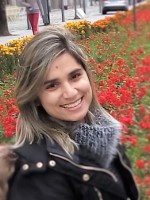abstract
This work provides a comprehensive evaluation of the effect of the cation alkyl side chain length of the 1-alkyl-3-methylimidazolium chloride series ([C(n)C(1)im] Cl, n = 2-14) of ionic liquids (ILs) on their capability to form aqueous biphasic systems (ABSs) with salts and self-aggregation derived properties. The liquid-liquid phase behavior of ternary systems composed of [C(n)C(1)im] Cl, water, and K3PO4 or K2CO3 and the respective Setschenow salting-out coefficients (k(s)), a quantitative measure of the two-phase formation ability, were determined. An odd-even effect in the k(s) values along the number of methylene groups of the longest IL cation alkyl side chainwas identified for theABSformed by K2CO3, a weaker salting-out agent where the phenomenon is clearly identified. In general, cations with even alkyl side chains, being likely to display higher molar volumes, are more easily salted-out and thus more prone to undergo phase separation. The odd-even effect in the k(s) values is, however, more significant in ILs up to n = 6, where the nanostructuration/nanosegregation of ILs plays a less relevant role. Still, with the [C(n)C(1)im] Cl (n = 7-14) series of ILs, an odd-even effect was also identified in the ILs' ionization degree, molar conductivity, and conductivity at infinite dilution. In summary, it is shown here that the ILs' odd-even effect occurs in IL aqueous solutions and not just in neat ILs, an already well-established phenomenon occurring in a series of ILs' properties described as a result of the orientation of the terminal methyl groups to the imidazolium ring cation and consequent effect in the ILs' cohesive energy. Published by AIP Publishing.
keywords
MUTUAL SOLUBILITIES; 2-PHASE SYSTEMS; PHASE-DIAGRAMS; MICELLE FORMATION; SELF-AGGREGATION; CATION SYMMETRY; 298.15 K; WATER; BEHAVIOR; SEPARATION
subject category
Chemistry; Physics
authors
Belchior, DCV; Sintra, TE; Carvalho, PJ; Soromenho, MRC; Esperanca, JMSS; Ventura, SPM; Rogers, RD; Coutinho, JAP; Freire, MG
our authors
Groups
G4 - Renewable Materials and Circular Economy
G5 - Biomimetic, Biological and Living Materials
Projects
CICECO - Aveiro Institute of Materials (UID/CTM/50011/2013)
SusPhotoSolutions - Soluções Fotovoltaicas Sustentáveis (SUSPHOTOSOLUTIONS)
Projeto de Investigação Exploratória: Sónia Patricia Marques Ventura (IF/00402/2015)
Projeto de Investigação Exploratória: Pedro Carvalho (IF/00758/2015)
Igy Technology: A Purication Platform using Ionic-Liquid-Based Aqueous Biphasic Systems (IGYPURTECH)
acknowledgements
This work was developed in the scope of the project CICECO-Aveiro Institute of Materials, POCI-01-0145-FEDER-007679 (Ref. FCT UID/CTM/50011/2013) and LAQV/REQUIMTE (UID/QUI/50006/2013), financed by national funds through Fundacao para a Ciencia e a Tecnologia (FCT, Portugal)/MEC, and co-financed by FEDER under the PT2020 Partnership agreement. D. C. V. Belchior acknowledges the financial support from Conselho Nacional de Desenvolvimento Cientifico e Tecnologico - CNPq for the Ph.D. grant (No. 202337/2015-4). The authors are also grateful for the financial support under the scope of SusPhotoSolutions (No. CENTRO-01-0145-FEDER-000005) and for the contracts of S. P. M. Ventura (No. IF/00402/2015), J. M. S. S. Esperanca (No. IF/00355/2012), and P. J. Carvalho (No. IF/00758/2015) under the FCT Investigator program. M. G. Freire acknowledges the European Research Council under the European Union's Seventh Framework Programme (No. FP7/2007-2013)/ERC Grant Agreement No. 337753.







